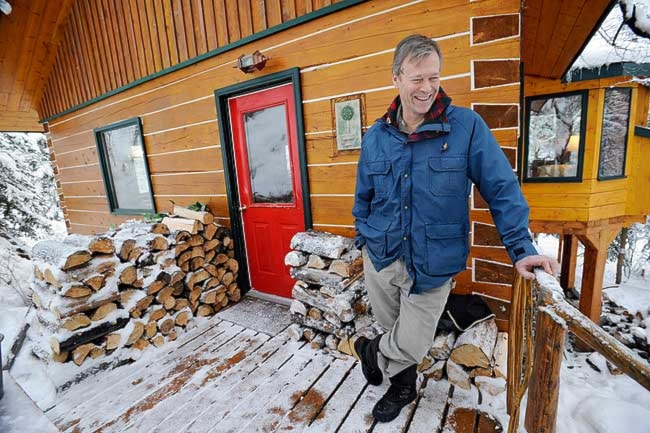Yukoners would be stinkin’ mad if the government tried to ban pick-up trucks.
Yet they may be watching the quiet demise of another part of the territory’s rural character, warns Dave Loeks.
He’s talking about log cabins.
Proposed changes to the National Building Code of Canada could squeeze new, solid-timber homes from the market, he warns.
It’s an unintended consequence of a push to make homes more green and energy efficient, he said.
“It’s a much broader question than the technocrats have focused on,” said Loeks. “I don’t think anyone had this in mind when we went down this road.”
Loeks built his log home off the Takini Hot Springs Road, north of Whitehorse. Its squared-off beams of white spruce are considered by federal energy wonks to have the same insulating value as an unrenovated, war-era home in Riverdale.
“We know that’s not true. These homes are far warmer than that,” said Loeks.
He’s spent 30 Yukon winters in his home in comfort. But personal experience isn’t the same as scientific data.
So Loeks is encouraging Yukon College to set up a study that would measure the insulating value of a solid-wood wall to modern methods.
That would either prove or disprove Loeks’ contention that there’s something screwy with the models that undergird the federal EnerGuide system of rating home heating efficiency.
“Then we’ll finally be talking apples to apples,” he said. “According to the EnerGuide, I should have frozen years ago.”
Loeks sells log home kits through his B.C.-based company, Haven Timber Homes. He envisions a future in which Canada’s native reserves get their shoddy, mould-ridden homes replaced with cozy, long-lasting log houses.
His company recently built a six-unit apartment building for a First Nation at Alkali Lake for $85 per square foot. That’s as much as a third less than the cost of building some homes in Whitehorse today, he said.
It’s based on a modular, post-and-beam design that can be easily snapped together, in a way Loeks likens to a big Lego set.
But two big impediments face Loeks selling his building kits in Whitehorse.
In 2009, Whitehorse updated its building code to require EnerGuide 80 targets. Those are the same federal rules that may be incorporated into the federal code.
They make it difficult to build a new log home, said Loeks. By comparison, it’s far easier in Fairbanks, where American national standards are more forgiving to log construction.
Another problem in the territory is the limited volume of timber available to woodcutters. Unless more wood is made available, Loeks doesn’t think it would be profitable to open shop here.
It’s possible to wrap a log building with a layer of foam insulation, which can then be hidden with authentic-looking wood cladding. That adds considerably to the building’s cost, but Loeks reckons it would still be cheaper than many conventional styles of construction.
He argues federal energy officials should take a broader view of energy conservation: consider the environmental impact of manufacturing synthetic materials, trucking them to the territory, and eventually land-filling them once a building is torn down.
Then compare that to his home.
“Hell, you could just compost it,” said Loeks.
And insulating value isn’t everything. Loeks’ home is heated primarily by a wood stove. He cuts the firewood from his own 4.8-hectare property.
And the Yukon has no shortage of trees. Loeks envisions the territory one day largely heating its homes with hydroelectricity and wood pellets.
If it did so, he said, “we could be carbon neutral.”
Contact John Thompson at
johnt@yukon-news.com
